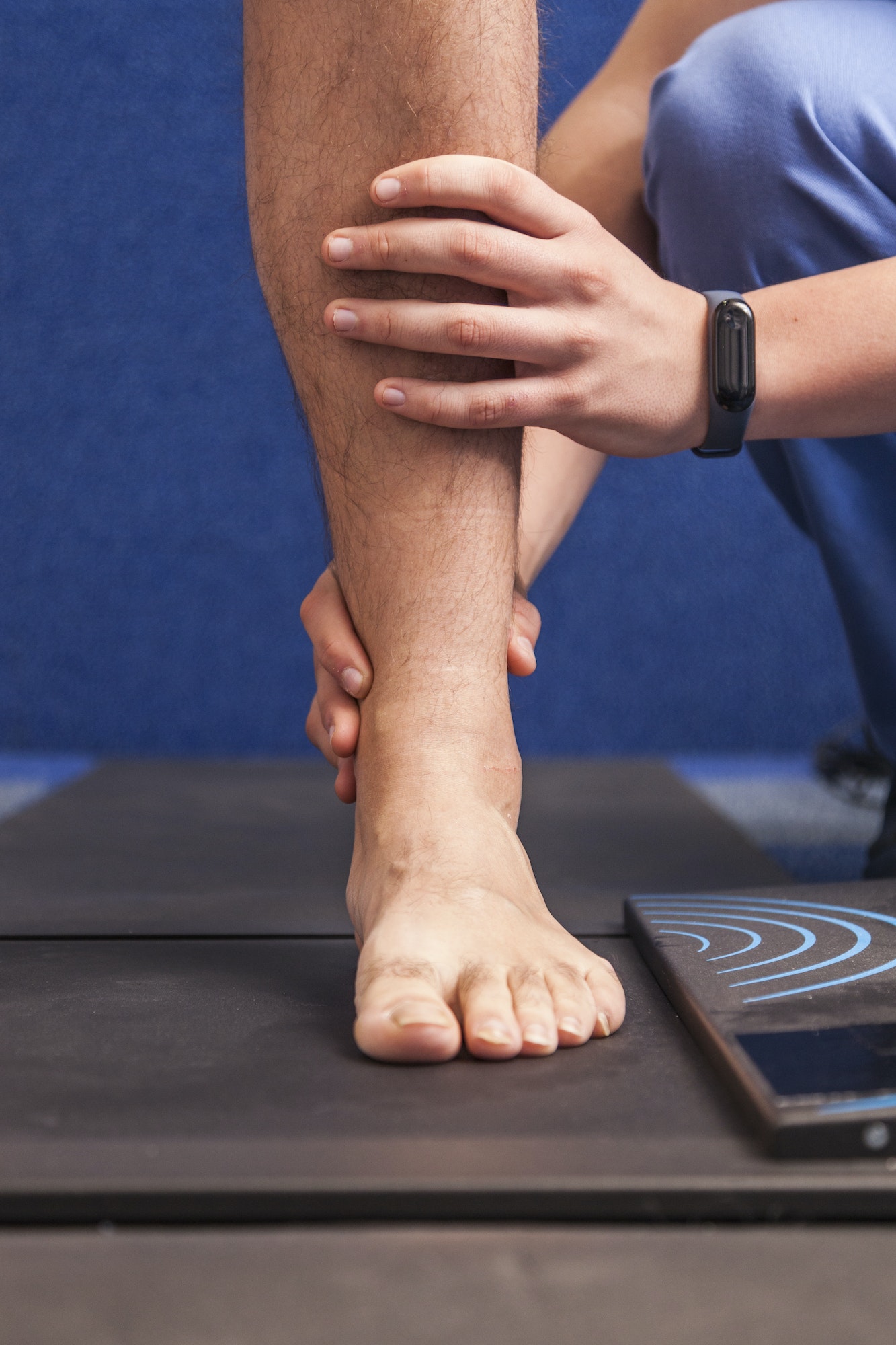Table of Contents
What is Peripheral Arterial Disease (PAD)?
Peripheral Arterial Disease (PAD) is a common, yet serious circulation problem in which the blood vessels that carry blood to your extremities become spastic, narrowed or clogged. PAD can affect any artery in your body including your brain, heart, kidneys and other major organs; however, the legs and feet are most commonly affected. The most common cause of PAD is atherosclerosis, the buildup of plaque inside the artery wall. Over time, plaque and fatty deposits clog arteries which decreases blood flow to the lower extremities leading to poor healing and tissue necrosis. Other causes of PAD include injury to the arms and legs, infection and genetics. Over 10 million Americans have PAD. 75% of people diagnosed with PAD also have heart disease. Individuals diagnosed with PAD have an elevated risk of suffering from stroke or heart attack. In fact, if left untreated, PAD has a 30% fatality rate within five years.
What are the signs and symptoms of Peripheral Arterial Disease?
Vascular Symptoms
These occur inside your body and are things your Doctor will check for:
- Weak pulses in the legs and feet
- Decreased temperature to the legs/feet
- Redness to toes and feet that improves with leg elevation
Dermatological Symptoms
These are things that you and your Doctor can both watch for:
- Discoloration with a bluish/ purple hue to toes and feet
- Changes to the skin including thin, brittle or shiny skin texture
- Poorly healing wounds to the lower extremity
- Decreased hair growth at the level of the feet
- Thickened and slow growing nails
Musculoskeletal Symptoms
- Pain in the legs caused by walking, often relieved with rest
- Pain in the legs at rest, often described as burning or aching sensation (this is commonly called ischemic pain)
- Numbness, weakness, or heaviness in muscles
- Pain
Who is at risk of developing Peripheral Arterial Disease?
Risk factors that you can’t change:
- Age (especially individuals older than 50)
- Personal or family history of PAD, heart disease, heart attack or stroke
- Male gender
- Postmenopausal women
Risk factors that you can change:
- Smoking or use of tobacco products (currently or previously)
- Smoking increases your risk of PAD by 400%!
- Diabetes
- High blood pressure
- High cholesterol
- Coronary artery disease
- Obesity
- Sedentary lifestyle (infrequent or no exercise)
What are PADnet studies?
Fortunately, today there is non-invasive technology that can determine the presence of PAD. Over 50% of individuals diagnosed with PAD are asymptomatic. The key to prevention is early detection- that’s where PADnet studies come in. PADnet is a non-invasive circulation test that tests for arterial disease in your lower extremities. The test takes approximately 20 minutes, and it consists of a series of blood pressure cuffs around your upper arms, thighs, calves, ankles, and big toes which measure the pulse waves at each level using sensors. This wave form analysis is called Pulse Volume Recording (PVR).
Secondly, your blood pressure will be recorded at your arms and ankles; the Ankle-Brachial Index, known as the ABI, is determined by the ratio between these pressures. The systolic blood pressure (the top number of the blood pressure measurement) of the ankle is divided by the systolic blood pressure of the arm. Ideally this number should be close to 1; which would indicate that the blood flow to your lower extremities is similar to the blood flow in your upper extremities. PAD is diagnosed if your ankle pressure is lower than your arm pressure. With severe narrowing, the ABI or ankle pressure may be half of your arm pressure. If your ABIs are abnormal, your doctor may refer you to a vascular specialist who can order additional diagnostic testing and discuss treatment options with you.
What are PADnet studies?
Fortunately, today there is non-invasive technology that can determine the presence of PAD. Over 50% of individuals diagnosed with PAD are asymptomatic. The key to prevention is early detection- that’s where PADnet studies come in. PADnet is a non-invasive circulation test that tests for arterial disease in your lower extremities. The test takes approximately 20 minutes, and it consists of a series of blood pressure cuffs around your upper arms, thighs, calves, ankles, and big toes which measure the pulse waves at each level using sensors. This wave form analysis is called Pulse Volume Recording (PVR).
Secondly, your blood pressure will be recorded at your arms and ankles; the Ankle-Brachial Index, known as the ABI, is determined by the ratio between these pressures. The systolic blood pressure (the top number of the blood pressure measurement) of the ankle is divided by the systolic blood pressure of the arm. Ideally this number should be close to 1; which would indicate that the blood flow to your lower extremities is similar to the blood flow in your upper extremities. PAD is diagnosed if your ankle pressure is lower than your arm pressure. With severe narrowing, the ABI or ankle pressure may be half of your arm pressure. If your ABIs are abnormal, your doctor may refer you to a vascular specialist who can order additional diagnostic testing and discuss treatment options with you.
What other tests can help diagnose Peripheral Arterial Disease?
Doppler ultrasound studies
Using computers and high frequency ultrasound sound waves, images are created of blood vessels, tissues and organs. Dopplers help measure and assess the blood flow. Absence of sound or faintness of sound may indicate narrowed or occluded arteries.
Angiogram
Magnetic resonance angiography (MRA)
Photoplethysmography (PPG)
What are treatment options for Peripheral Arterial Disease?
Non-Invasive Treatments
- Lifestyle changes: Smoking cessation is a key lifestyle change that will tremendously slow down the progression of this deadly disease. Additionally, regular exercise and proper nutrition are key to decreasing plaque and fatty deposits to the arteries.
- Treatment of current medical conditions. Uncontrolled diabetes, high blood pressure and high cholesterol increase the severity of PAD. Treating these high-risk medical conditions can help halt the progression of artery disease.
- Medication. There are medicines your vascular doctor can prescribe such as blood thinners (antiplatelet agents) and those that can help relax the blood vessels walls so there is less constriction to the arteries.
Invasive Treatments
Prior to performing these invasive procedures, angiograms are frequently done to adequately visualize the blood vessels.
- Angioplasty: A catheter is inserted in the artery to help increase the diameter of the vessel to increase blood flow. There are various techniques that are under the angioplasty umbrella.
- Balloon angioplasty: Balloon is inflated inside the narrowed artery to widen the vessel.
- Atherectomy: The blocked or occluded segment of the artery is shaved with a small device at the end of the catheter, this method cleans out the artery and helps remove plaque and fatty deposits.
- Stent placement: A small meshed coil is inserted in the artery walls and left in place to help keep the artery open and lower the risk of arterial collapse.
- Bypass procedure: When a narrowed or blocked artery is severe and cannot be treated with angioplasty techniques, bypass is often recommended. Using a bypass graft from another vessel in the body (veins are commonly used) or those made of synthetic materials, grafts are placed in the region of the blocked artery to reroute the blood flow and bypass the diseased artery.
What are the complications of Peripheral Vascular Disease?
- Heart attack: individuals with PAD often have coronary artery disease (CAD)
- Stroke: 3 times more likely in individuals with PAD
- Amputation: loss of limb or limbs
- Poor wound healing that poses high risk of infection leading to amputation
- Restricted mobility due to pain
- Severe pain in the affected extremity – can be during activity and/or at rest
- Loss of life: untreated PAD has a 35% mortality rate within 5 years
How can I prevent Peripheral Arterial Disease?
Managing risk factors and living a healthy, balanced lifestyle is key to prevention. Prevention for PAD often includes:
- Control current medical conditions such as diabetes, high blood pressure and high cholesterol
- Quit smoking, including exposure to second hand smoke and use of other tobacco products
- Dietary changes: Reduce fats, cholesterol and simple carbs such as sweets. Increase consumption of fruits, vegetables, low-fat fat dairy and lean meats.
- Weight loss
- Exercise 20 minutes or more daily
- Limiting or quitting alcohol consumption
Expert Opinion
As a limb salvage and wound care specialist, I recommend disease prevention and early detection using PADnet studies to all my high-risk patients. Since half of individuals with PAD are asymptomatic, undergoing initial screening with PADnet studies is crucial to diagnosing this often-silent condition. Unfortunately, I perform many amputations in my specialty. Over 60% of the amputations I perform are for individuals who have undiagnosed PAD (both symptomatic and asymptomatic). Annually, about 150,000 lower-limb amputations in the United States can be attributed to peripheral arterial disease.
PADnet studies are non-invasive and painless- they are a great first line screening for PAD. Despite the importance of this screening tool, I see very few primary care physicians ordering this test. I recommend these studies to anyone that has the above-mentioned symptoms or risk factors. Early detection and diagnosis of PAD decreased the risk of limb loss, heart attack and stroke. Again, early detection is key! The sooner we screen patients for PAD, the sooner we can diagnose this deadly condition, discuss treatment options and take preventative measures to halt disease progression.
Key Take Away Points about Peripheral Vascular Disease:
- Individuals with PAD have equivalent risk factors for developing heart attack and stroke
- 50% of individuals with PAD are asymptomatic
- Untreated PAD can lead to loss of limb or loss of life
- Prevention and early detection with PADnet studies is key to limiting complications and disease progression

Meet Weil Foot & Ankle Institute
Review By: Katerina Grigoropoulos DPM – Feb 14th, 2023


